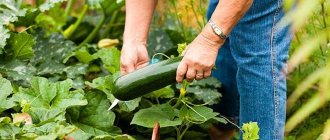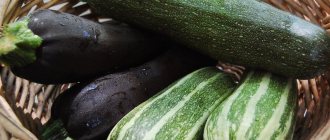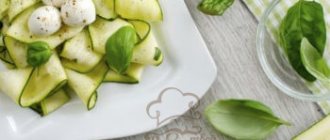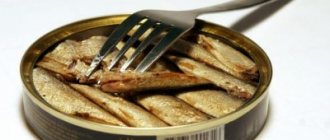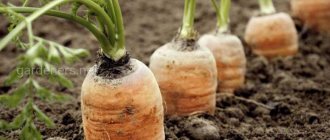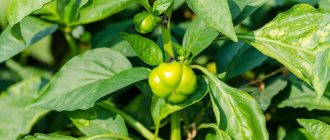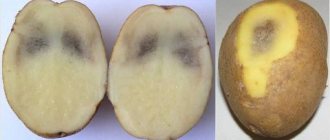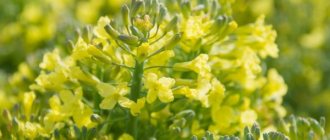Yellow zucchini is now my favorite.
I think that almost every gardener grows a vegetable crop like zucchini. There is nothing complicated about it, so I also plant this wonderful vegetable, But. We have always grown only white or green ones, but this year I wanted to try something unusual, so I bought yellow zucchini. Honestly, I didn’t even remember the variety, I just didn’t expect that I would like it so much!
I read such interesting information about yellow zucchini! It turns out that the yellow zucchini belongs to the herbaceous plants of the genus Pumpkin, the Cucurbitaceae family, and is a variety of the common pumpkin! It has softer and juicier flesh than green ones. And, although it consists of 95% water, it contains proteins, carbohydrates, and minerals: salts of phosphorus and magnesium, potassium and sodium, calcium and iron. And among the microelements useful for the human body, it contains titanium, lithium, molybdenum and zinc. Plus, yellow zucchini contains vitamins: A (carotene), nicotinic acid, B1 and B2, and a significant amount of vitamin C. And the uniqueness of zucchini is that it has an excellent moisturizing effect, so it is often used in various masks for faces. Zucchini pulp rejuvenates, improves color and microcirculation of facial blood and protects the skin from ultraviolet radiation. So it turns out that this vegetable is not only tasty and healthy for the body, it is also an assistant for our beauty! Why did I like the yellow zucchini? Yes, because it looks very impressive against the background of green foliage, so bright, beautiful, sunny, very uplifting! And simply delicious! Next year I will definitely plant only the yellow ones.
I planted the seeds directly into the ground.
They grow very quickly, so I don’t really see the point in planting seedlings. Care consists of loosening and timely watering with warm water. I mulch the beds with mowed grass, so there is no need for loosening, all that remains is to water and harvest.
They go well with greens and squash. I also planted squash for the first time, I liked them because of their interesting shape! I will definitely plant yellow squash and squash, but only a couple of bushes. I planted 5, which is a lot. For a family of 4 people, a couple of bushes are enough.
So bright, beautiful and sunny.
We stew zucchini with any other vegetables, meat, or fry it in pieces and fill it with eggs. This is delicious! And, as it turns out, very useful!
I advise everyone to plant yellow zucchini too! They will definitely make you happy!
Harm of zucchini
Although zucchini is considered a hypoallergenic product, and is even given to babies for their first feeding, it is still not so harmless. Zucchini can cause digestive problems in people suffering from irritable bowel syndrome, and can also cause unpleasant symptoms of gastritis and ulcers.
This vegetable has a porous structure and is capable of accumulating not only useful, but also harmful substances. If zucchini was grown on contaminated soil using fertilizers, nitrates, and pesticides, then it can cause allergies, nausea, and poisoning. It's better to eat proven zucchini.
Zucchini, the brother of pumpkin and cucumber, contains cucurbitacin, a toxic substance with a bitter, unpleasant taste that can cause an acute reaction in the body. Its concentration depends on the weather, watering and other weather conditions; most often it is concentrated in the seeds and peel. Bitter zucchini can lead to stomach cramps or diarrhea, so you should not eat them even after heat treatment - cucurbitacin is not destroyed when exposed to high temperatures.
It is better to peel the skin from the zucchini
Botanical features
Yellow-fruited zucchini is less in demand in world cuisine than the very common zucchini, but is very often found in gardens and household plots in different regions of our country. In addition to the peculiar coloring of the skin, yellow zucchini is characterized by a more fibrous structure of ripe pulp.
Such zucchini are quite in demand among gardeners and consumers of fresh vegetable products due to their visual appeal, as well as their low calorie content, which is only 17-18 kcal per 100 g of pulp. Yellow-fruited varieties of zucchini have proven themselves in dietary and baby food.
Characteristics of yellow-fruited varieties
Today, yellow zucchini has already left the category of exotic vegetable and is successfully cultivated by summer residents in their garden plots. Vegetable growers and gardeners give preference to several of the most promising varieties.
| Variety name | Description and characteristics | Advantages and disadvantages | Ripening time and yield |
| "Pear-shaped" | The fruits are pear-shaped, measuring no more than 23 x 13 cm and weighing up to 0.9-1.3 kg. The pulp is dark orange, fragrant | Excellent for processing and widely used in cooking. Fruits are stored for a long time | Early variety with high yields |
| "Golda" | The fruits are golden-orange, up to 40-50 cm long and average weight no more than 2.5-3 kg | Disease-resistant and highly commercial variety | Early hybrid with high yield up to 450–570 c/ha |
| "Goldrush" | Golden-yellow fruits up to 20 cm long and weighing up to 210 g. The pulp is creamy white, very tender. | Dutch hybrid, suitable for fresh consumption and canning | An early ripening hybrid with a yield of 11.5 kg/sq.m. m |
| "Yellowfruited" | Intensely colored, bright yellow cylindrical fruits, weighing 0.8-0.9 kg, with high sugar content | Sufficient resistance of the variety to powdery mildew | Early ripening zucchini with a yield of up to 20 kg/sq.m. m |
| "Golden" | Fruits weighing up to 1 kg and excellent taste | Sufficient resistance of the variety to powdery mildew | Early ripening zucchini with a yield of about 16–18 kg per square meter |
| "Helena" | Golden-yellow fruits up to 20 cm long and weighing up to 610 g. The pulp is yellow, very tender and tasty. | Sufficient resistance of the variety to powdery mildew and bacteriosis | Early ripening variety with a yield of 15.4–27.5 t/ha |
| "Sunlight" | The fruits are 4-5 cm in diameter, no more than 18 cm long, golden yellow in color, with dense white pulp. | Suitable for fresh consumption and processing | French hybrid form of early ripening with high yield |
Varieties of yellow zucchini such as “Banana”, “Athena Polka-F1”, “Pineapple”, “Pinocchio”, “Tender Marshmallow”, “Lemonade Joe”, “Generous Bogatyr”, “Pippi”, are also of interest for home garden vegetable growing. "Mary Gold-F1" and "Yellow Stars".
The best self-pollinating parthenocarpic species
Parthenocarpic squashes do not need pollination of flowers to form fruits, so they produce stable yields regardless of weather and insect activity, and are suitable for growing in greenhouse and greenhouse conditions. The varieties listed below are recognized as the best among them.
Cavili
A hybrid that produces medium-sized zucchini weighing up to 0.5 kg and no more than 25 cm in length. The pulp is pleasant to the taste, tender, and can be consumed even raw. Like many other varieties and hybrids, when harvested late, its taste deteriorates. Kavili begins to bear fruit early, 40-45 days after the appearance of the first shoots, the harvest is harvested from it until frost. The hybrid is resistant to powdery mildew. The compactness of the plants allows you to plant 4 bushes per 1 m2 and get up to 9 kg of fruit from this area . Dutch selection.
Jellyfish
An early-ripening variety, the harvest of which is harvested in just 35 days from the moment of seed germination. Zucchini ripen medium-sized: their weight is about 800 g, and their length is 25 cm, the shape of the fruit does not deform during ripening, the color of the skin changes from greenish to white as it grows. The pulp is slightly sweet, there are few seeds, the peel is thin, and does not harden if harvested at the wrong time.
The fruits are suitable for long-term storage. Productivity reaches 9 kg/m2. The plant belongs to the bush type. Sometimes it is affected by powdery mildew. Jellyfish grows and bears fruit in soils fertilized with nutrients.
Parthenon
A reliable medium-climbing hybrid that bears fruit in extreme conditions of heat or, conversely, heavy rains. Characterized by resistance to diseases caused by fungi. The taste of the fruit is excellent: the pulp is juicy and sweetish.
Fruits tirelessly, 40-45 days after seed germination and until October. At the same time, the yield of the hybrid is up to 15 kg/m2. The average weight of zucchini is 300 g, length is 20-25 cm. The fruits are suitable for freezing. Long-term storage of zucchini is possible. It is recommended to plant 3-4 bushes per 1 m2 . The hybrid is one of the achievements of Dutch selection.
Recommendations for planting
Yellow-fruited squash is a fairly unpretentious, tasty and healthy vegetable that grows very well in backyard vegetable growing conditions and is widely used in cooking.
Planting zucchini in open ground involves pre-processing the planted seed material. The best predecessors for zucchini are early cauliflower and cabbage, green and legumes, as well as root vegetables, tomatoes, potatoes and onions. You can plant zucchini not only with seeds, but also with seedlings. It is necessary to plant zucchini on ridges in open ground after the threat of late spring cold has passed, which is due to the high sensitivity of the plant to frost.
The seedling method is well suited for obtaining early vegetable products. To grow zucchini suitable for long-term storage, it is recommended to directly sow seeds in open ground from mid-May to mid-June. A significant part of the yellow-fruited varieties are early ripening, so vegetables planted at this time can form a bountiful harvest.
According to experienced gardeners, when growing in the central zone of our country, it is advisable to remove the film from the ridges no earlier than mid-June. Before emergence of seedlings, it is recommended to maintain the temperature at a level not lower than +17-20°C. Not only the crop yield, but also the quality indicators of the fruit will depend on further plant care.
Unusual varieties
Gardeners grow zucchini not only for eating, but also for decorating their yard. The standard shape of the fruit is cylindrical, the flesh is elastic and homogeneous. Experts suggest breaking away from tradition and growing spaghetti, bananas, pineapples or oranges on your plot.
Spaghetti Raviolo
Zucchini of the Spaghetti variety is yellow-fruited, late. The fruits ripen in 120-140 days. It is grown in open ground. The bush is spreading, so it needs to be properly formed in order to achieve soil ventilation. Zucchini is harvested, both milky and fully ripe:
- Young fruits have light, uniform flesh. Ripe berries have fibrous pulp. She looks like pasta. It is separated from the peel with a fork or spoon; in this case, the fruit is cut into 2 halves;
- no seeds;
- pods grow up to 30 cm, they can reach 20 cm in width;
- They begin to harvest zucchini if they have reached a weight of 250-300 g. Fully ripened fruits reach 1500 g;
- one bush brings 8 kg;
- The skin of Spaghetti Raviolo is thick. The harvest is stored at room temperature.
Plant fibers can be boiled, fried or stewed. They retain their shape and look attractive on a plate. The plant is unpretentious, well adapted to precipitation and daily temperature changes.
Rules of care
Caring for zucchini consists of carrying out activities such as watering, weeding and loosening the soil, as well as fertilizing:
- for the first time, loosening the soil should be done about a week after planting the seedlings;
- The full growth and fruiting of this vegetable crop depend on watering, therefore, until flowering, zucchini should be watered at least once a week, spending approximately 5-6 liters of water for each plant;
- at the stage of formation and ripening of fruits, irrigation measures should be increased and watering should be carried out approximately twice a week with a consumption of 10 liters of water per square meter;
- It is necessary to water the zucchini with water at room temperature, since the use of cold water often causes rotting of the ovaries and young fruits;
- Before flowering, plants should be fed with a nitrophoska solution, which can be replaced with mullein or chicken droppings;
- the second feeding is carried out at the flowering stage using wood ash and organic fertilizers;
- for the third fertilizing at the phase of fruit formation and ripening of the crop, it is advisable to use the Efecton fertilizer;
- In order to improve the illumination of the fruit, it is recommended to pinch the apical part of the vine above the fourth or fifth leaf.
Zucchini turns yellow and rots small: what to do
Plants in the garden are exposed to climatic conditions and other negative factors. One of the most unpleasant problems that farmers face is the rotting of ovaries and fruits. In order not to lose the harvest, it is necessary to quickly identify the source of the problem and correct the situation.
Failure to comply with crop rotation
The rotation of crops grown in the garden is often underestimated. Following the recommendations for crop rotation allows you to get a good harvest with minimal care. Violation of the rules leads to problems with the growth of vegetables. It is not recommended to allocate the same beds every year for pumpkin plants (melons, cucumbers, zucchini). Plant from in rotation every 3 years. A culture of one family selects certain microelements and leaves pathogens in the soil.
Advice. Successful predecessors for zucchini: legumes, cabbage, tomatoes and potatoes.
Abundant watering
Fruits rot from excessive moisture. According to agrotechnical rules, the plant requires rare but abundant watering. Irrigation should be carried out once a week, more often only in hot weather. The amount of moisture during the period of leaf growth is 5 liters per bush, with the beginning of fruiting it doubles to 10 liters. Overwatering, especially with poor drainage, leads to stagnation of moisture on the surface. Fruits that are constantly lying on wet ground begin to rot.
The problem can be solved by reducing watering. You should also make supports for the pumpkins. It can be a board, plastic, mulch, or a large leaf of a plant.
Lack of mineral elements
Nutrient deficiency affects the health of plants. The bushes become lethargic, chlorosis appears on the leaves, the fruits turn yellow and fall off. The main chemical elements (nitrogen, phosphorus, potassium) are added with fertilizers. If the composition of the feeding is limited, there is a lack of certain microelements - boron, iodine, calcium. How to water the plant?
There are complex mineral fertilizers that contain the necessary elements. This is "Agricola", "Diammofoska". You can fill the deficit using available means. Boric acid is suitable for fertilizing with boron. It is diluted in hot water in a ratio of 1 g per 1 liter. Spraying is carried out on the leaf. This way nutrients are absorbed faster. Treatment with iodine solution (40 ml per 10 liters of water) is recommended for all pumpkin crops in open ground. Element deficiency is a common reason why fruits turn yellow and fall off.
Advice. Apply foliar feeding in dry, windless weather in the morning or evening. Precipitation washes off the drug and the procedure will have to be repeated.
Overabundance of nutrients
Zucchini turns yellow and grows poorly when there is an excess of organic matter. Beginning gardeners violate the recommendations on the feeding regime and apply fertilizers every week. Feeding with the same substance is especially harmful to the plant. The use of fertilizers containing chlorine has a negative effect. Zucchini is sensitive to the element, the fruits change color, and their taste deteriorates. It is better to stop using potassium chloride or apply it in the fall. Fertilizer can be replaced with potassium sulfate.
Information. Adding fresh manure to the hole when planting seedlings causes burns to the roots. A damaged plant is unable to bear fruit normally. It is better to use manure during autumn soil preparation.
One of the causes of the problem is a high concentration of minerals. Dry granules must be dissolved in water according to the instructions, without exceeding the dosage. Watering must be done before fertilizing. You cannot fertilize plants on dry soil, this harms the root system. What to do? Collect spoiled fruits and temporarily stop feeding.
Thick green mass
On fertile soil, generously fertilized with organic matter and nitrogen, the bushes grow a lush green rosette. Large leaves protect fruits from overheating, but in large numbers they become an obstacle to normal air exchange. Moisture dries slowly, creating favorable conditions for the development of fungal infections and rot. It is recommended to remove several large leaf blades above the pumpkins. The cut of the petiole must be sprinkled with ash or activated carbon.
Information. A rotting flower sometimes infects the fruit. To prevent the end of the squash from spoiling, carefully tear off the petals after the fruit has formed.
Planting plants close together after the bushes have grown creates conditions of high humidity and provokes a lack of nutrients. Recommended growing scheme:
- 70-80 cm between plants in the garden bed;
- 90-100 cm between beds.
What color zucchini is best to sow this summer?
Among the new products in the State Register of Breeding Achievements, many yellow zucchini have appeared. Why have breeders increasingly begun to create varieties of this particular color, rather than the traditional white or green? They have good reason.
Gold means valuable
Yellow vegetables are often more valuable than white ones. They are rich in vitamin C, beta-carotene and many other beneficial substances that reduce the risk of cancer, improve heart and eye health, improve immunity, and delay old age.
Yellow zucchini has flesh of the same color, which means it contains the same nutrients. In addition, these golden fruits are eaten unripe, small, no more than 20 cm, and raw, along with the vitamin-rich skin, which has not yet hardened.
Sunny squash contains a lot of potassium, which is necessary for the functioning of the heart muscle. It quenches thirst perfectly: I ate 100 g and drank half a glass of water. Yes, not simple and not even key, but therapeutic, biologically active!
The calorie content of zucchini is minimal - 20–23 kcal per 100 g. For a diet, you won’t find a better one. Women of an elegant age, when hormonal changes lead to the accumulation of fat reserves and cholesterol in the blood, should actively include zucchini in the menu.
A zucchini diet reduces hidden and obvious edema during pregnancy or poor heart function, because the ratio of sodium and calcium salts in fruits is the most favorable for maintaining the body’s water balance. This means that the vegetable is able to remove excess fluid from the body.
Zucchini dietary fiber absorbs toxins and removes them from the body. This property is important for people who constantly take medications.
It has been proven that if you regularly eat zucchini, your hair will resist the appearance of gray hair. So, for those who care about their health and beauty, zucchini should be included in the daily menu.
Egg means delicious
Zucchini came to Europe in the 16th century, but for a long time they were grown exclusively as ornamental plants because of their large and bright flowers. And imagine, they are good not only for decorating the site, but also delicious! Yes, yes, zucchini flowers are eaten abroad! And yellow zucchini is tender, a rich egg yolk color and melts in your mouth.
In Mexico, for example, male flowers (those with stamens rather than pistils and incapable of producing fruit) do not disappear: they are carefully collected and sold in gourmet markets. And they fry them, bake them in pizza and pies, put them in soups, and add them to salads. They are also eaten raw, stuffed with cheese and pickled cucumbers.
In Greece, squash flowers are stuffed with rice and eggs with aromatic herbs, then baked in tomato sauce or deep-fried.
In Italy, for half a century now, newlyweds have been given a book with recipes, which contains many dishes with zucchini flowers, so that the young wife includes them in the regular family diet. This means that Italians have long equated fried zucchini flowers with elementary dishes.
Spanish scientists conducted a large-scale experiment and found that it is best to bake zucchini and their flowers in the oven or microwave. This is how the beneficial properties of zucchini are preserved.
Sunny means thin-skinned
Not so long ago, in our country, mainly white-fruited zucchini were grown, which, as a rule, appear early, but are slow to fill. They are relatively thick-skinned, with the core falling out after heating.
Recently, zucchini - green, spotted or striped - have become leaders in the zucchini world. Well, now they have been joined by yellow-fruited zucchini - a little more fibrous than green, but also very tasty.
Sunny zucchini, like green zucchini, has a compact bush with a small number of leaves, weak branching, and an open stem with shortened internodes. In a word, plants are more convenient than creeping vines.
They are early ripening, predominantly of the female type of flowering, lay the first fruit early and give a generous harvest, which is 2–4 times higher than that of white-fruited squash.
Yellow zucchini also stores better and is much less susceptible to viral diseases. Their flesh is more tender, and their skin is thinner and does not harden too quickly.
Fed means productive
Growing yellow zucchini is no more difficult than regular white zucchini. In early June, the seeds are placed in damp gauze until they hatch. Then they sow 2 seeds per hole in a sunny bed in soil spilled with warm water to a depth of 2.5 cm. A week after germination, one of the strongest plants is left in the hole, cutting off the weaker ones. There should be 2 bushes per 1 m².
Then dilute 2 g of bud growth stimulator in 1 liter of water and feed it at the root, using 1 glass of solution for each seedling.
Water the zucchini in the morning with warm water once every 5–7 days so that the soil becomes moist at a depth of 30–40 cm. At the same time, try not to get it on the leaves. Cold water can cause young fruits to rot. 10 liters are consumed per 1 m² until the ovary forms, then the volume is doubled.
When the zucchini has bloomed, they are fed at the root with an aqueous solution of mullein (1:15) or chicken manure (1:20). of liquid. a spoonful of any complex mineral fertilizer (nitrophoska, potassium monophosphate). For 1 m² there are 5 liters of solution.
The plants are fed for the last time when the fruits set. Dilute 1 tbsp in 10 liters of water. spoon of potassium sulfate, double superphosphate and ammonium nitrate and pour under the root (10 l per 1 m²). Superphosphate is infused in water the day before.
In addition to this “lunch”, you can spray the zucchini leaves with a urea solution every 10 days (1 tablespoon per 10 liters of water).
Some gardeners do not pinch zucchini, but at the same time remove excess leaves from heavily overgrown bushes, 3 of the largest from the middle. Thanks to this, the ovaries receive more sun and nutrition.
It is better not to loosen the zucchini, but to hill it to a height of 4 cm every week after watering.
To attract pollinating insects, dilute a few tablespoons of honey in a glass of water and spray flowering plants early in the morning.
One bush can grow at least 15 zucchini if you cut them often and small in size. To increase their shelf life, cut off fruits with a stalk at least 5 cm long with a knife.
New means different
Last year, the State Register was replenished with several varieties and hybrids of yellow zucchini of excellent taste. All plants are bushy, compact with weak branching. And early ripening: 40–45 days pass from germination to the appearance of the first fruits.
Chicken F 1 has a round, smooth fruit weighing 0.6–1.2 kg. The pulp is light yellow, dense, medium juicy. Productivity 6.1–6.7 kg per 1 m².
The generous hero is decorated with dark yellow, slightly ribbed club fruits weighing 0.8 kg. Their flesh is yellow, tender, medium density, juicy. Productivity 4.1 kg per 1 m².
The nugget boasts cylindrical fruits, also dark yellow with very small dots, of medium length and diameter, almost without ribbing. Fruit weight 0.6 kg. The pulp is yellow, tender, medium density, juicy. Productivity 3.9 kg per 1 m².
Kenar F 1 also gives us cylindrical fruits, long, of medium diameter and size, slightly ribbed, weighing 0.6–1.0 kg. The pulp is creamy, medium density, medium juicy. The yield is 11.9 kg per 1 m², the highest among the new products.
The golden calf produces cylindrical, dark yellow zucchini with very small dots, medium length and diameter, slightly ribbed. Weight 1.0–1.7 kg. The pulp is yellow, tender, medium density, juicy. Productivity 7.2–7.5 kg per 1 m².
Goldcrash F 1 produces cylindrical fruits, long and thin, with small ribs, weighing 0.35–0.45 kg. The pulp is yellow, tender, medium density, not too juicy. Productivity 4.8 kg per 1 m².
There is an alternative option for a productive June sowing of zucchini. A mound with a diameter of 70–80 cm and a height of 30 cm is poured on the ground. A depression is made in the center, a bucket of humus and a half-liter jar of ash are placed in it, and mixed thoroughly. Then sow 2 seeds to a depth of 3 cm. Water and cover with a plastic bottle so that the seedlings do not freeze. The roots are well ventilated on the mound and the yield increases. Water the zucchini only in the recess and fertilize it with the ideal.
/ Zucchini is a neutral-tasting vegetable and is suitable as a side dish for any dish. And fried potatoes only benefit from the presence of zucchini.
(!) Ripe zucchini retains beneficial substances during long-term storage, so you can stock up on healthy vegetables from the summer for the entire fall and winter
Why do zucchini ovaries turn yellow?
If too many ovaries have formed on the zucchini bushes, some of them dry out, since the bush is capable of feeding a limited number of fruits. The plant itself regulates the number of ovaries based on its capabilities.
If too many of them dry out, there is cause for concern. It is important to find the cause of this situation and eliminate it.
Water shortage and extreme heat
Zucchini can withstand drought as they are able to accumulate moisture in the stems and leaves. But, if plants regularly experience a lack of moisture, their ovaries turn yellow and fall off. A similar phenomenon in young fruits is caused by heat - an increase in temperature to +40°C.
High temperatures literally cook young zucchini. They soften and acquire a cotton-like structure. A fabric canopy that protects plants from direct sunlight helps to avoid damage to the crop. Also, in hot weather, increase the watering rate.
Pests
One of the reasons for the yellowing of the ovaries with their subsequent falling off. Various pests can provoke this situation. These are mainly insects that feed on plant juices.
Yellowing and falling of the ovaries can occur due to the following pests:
- Spider mite. Small sucking insects that weave webs suck out juices from leaves and shoots. They reproduce intensively when there is a shortage of water and in extreme heat. It is recommended to spray the plantings with Iskra, Fitoverm and other insectoacaricides.
- Aphid. They live in colonies on the underside of leaves. They suck the juices out of plants. The bushes slow down, dry out, and the ovaries turn yellow and fall off. It is recommended to treat with solutions of wood ash (300 g per 1 l) or soap (200 g per 10 l).
- Whitefly. Small moths whose larvae suck juices from above-ground parts of plants. It is recommended to water the bushes with a stream under pressure to knock down pests. Spraying with a solution of grated laundry soap (the same proportion as against aphids) is also effective.
Lack of pollination
To form a fruit, plants need pollination, which involves the transfer of pollen from male flowers to female flowers. Usually this mission is performed by insects. But they don't fly if the weather is cold and wet. The flowers are not pollinated, the ovaries dry out, and fruits are not formed.
In order not to lose the harvest, gardeners must cross-pollinate the plants themselves. To do this, pick the male flowers and move their stamens over the female pistils. It is not difficult to distinguish a male flower from a female one - it has longer and thinner legs. In female flowers, the ovary is visible from under the petals.
For male flowers used for pollination, remove the petals before pollination. One bud can pollinate 2-3 female flowers.
How to attract insects to your garden:
- plant flowers with a strong scent next to the beds;
- spray the bushes with a solution of honey / sugar - 1 tbsp. l. for 1 liter of water;
- tear off the leaves covering the flowers.
Planting parthenocarpic varieties helps get rid of the pollination problem. They do not require pollination for the development of ovaries. These are hybrids. Unlike ordinary varieties, their fruits do not have seeds.
Yellow zucchini
Zucchini is rightfully considered a national vegetable, because the widespread use not only of fresh produce in cooking, but also a huge variety of recipes for canning cannot but delight housewives and their households. Zucchini is a type of zucchini that has incredible flavor characteristics and properties that make it great for eating and processing. Thin, moderately dense peel, combined with tender, juicy and crispy pulp, are ready to compete with any other vegetables.
Many people believe that the color of zucchini squash must be dark green, with a maximum of longitudinal stripes; therefore, when yellow representatives of zucchini are found on the fresh market, then nothing comes to mind except the thought that this is an overripe and very ripe zucchini. And only those who understand not only the varieties, but also the culinary features, will confidently defend the advantage of the yellow varieties of zucchini, because in addition to the unusual color, they have no less supply of vitamins, minerals and microelements, but also increased sweetness and juiciness, for which so loved by many consumers. Because of their special properties, we offer a list of yellow zucchini varieties that we recommend growing in your garden this season.
Zucchini variety Paladin
Paladin is a popular variety of yellow zucchini, which, in addition to its excellent taste, is also distinguished by long-term fruiting. The ripening period is 40-45 days. The plant grows in compact bushes that do not trail and occupy a moderate area. The fruits grow quite large and cylindrical in shape. The average length reaches 18-24 cm, which is reflected in the weight, which reaches from 500 to 1000 grams. Due to the small diameter, the weight is within normal limits, despite the rather short length. The color of the fruit is very beautiful, it has a bright yellow color, which is emphasized by its natural shine. The excellent taste of this variety is suitable for cooking and processing.
Zucchini variety Zolotinka
Zolotinka is a popular variety of yellow zucchini due to its rich yield and active use in canning. The ripening period is quite fast and is 38-40 days. Planting seeds can be practiced both in open and closed ground, which allows you to get an earlier harvest and sell it on the fresh market. The yield is very high, since from one bush you can easily harvest more than 15 kg per season. Despite the fact that the fruits on average do not exceed half a kilogram, their yield is high and their value is undeniable. The use of the Zolotinka variety in conservation is a standard practice. For the best preparations for the winter, use young fruits that have reached no more than 10 cm, because increased sweetness and the complete absence of seeds can emphasize the incredible taste of your preserves. It is recommended to plant seeds of this variety in an open, well-lit area, when the ground is sufficiently warm and the average daily temperature does not fall below 12 degrees. Immerse the seed 3-4 cm deep, then with regular watering and loosening you can count on a rich harvest.
Zucchini varietyZlato Skifov
Zlato Skifov is one of the best varieties of yellow zucchini, which has incredible taste and is suitable for mass transportation without losing its attractive appearance. The ripening period is early and lasts 35-40 days. The fruits are of moderate size and cylindrical in shape. The surface is smooth, shiny-glossy, which emphasizes the rich yellow color. The pulp, on the contrary, has a fairly dense texture and beige color. The weight reaches 750-1200 grams, which is quite a high figure. The Zlato Skifov variety confidently resists many diseases. Excellent taste and a wide range of fruit uses make this variety a favorite.
Zucchini variety Golden
Golden is a popular variety of yellow zucchini squash that simultaneously produces more than 4 fruits on the bush. The plant is a mid-season plant, because after 50 days from germination, you can count on the first harvests. The plant develops compactly in the form of a bush, occupying a moderate area. The fruits grow in a regular cylindrical shape of medium size, often reaching up to 20 cm in length. The surface of the fruit gives the name to the variety, since there is indeed a golden hue, which is also emphasized by a glossy-brilliant tint. The pulp, on the contrary, has increased density and a snow-white hue. Incredible taste and appearance are intertwined, creating a magnificent unison.
Why did the fruits and leaves turn yellow?
During the growing season, zucchini leaves may turn yellow. At the end of summer this is a natural process. But the yellowness of the leaf blade during growth raises questions. There can be many reasons for yellowing leaves on a bush:
- development of powdery mildew;
- lack of light, heat or nutrients;
- thickened plantings;
- chlorosis disease.
See also
Description of the zucchini variety Gentle Zephyr, features of care and planting
Read
Control measures depend on the cause of the color change and are agrotechnical or chemical. If the problem is noticed in time, then you should not hesitate to solve it.
Zucchini variety: Yellow-fruited
Yellow-fruited is one of the best varieties of yellow zucchini squash due to its high yield and attractive presentation. The ripening period is moderate and is 40-45 days. During this time, large fruits are formed, which can reach more than one and a half kilograms. The shape is cylindrical, but, like most yellow varieties, they have a slight narrowing near the stalk. The peel is quite thin, beautiful, rich yellow, which makes it easy to peel with a minimum amount of waste. The pulp has a delicate texture and a beige tint. To harvest a full harvest, I recommend planting seeds no earlier than May, keeping a distance between bushes of at least 70-80 cm. To be sure of germination, plant several seeds in a hole, then after germination, you should leave the strongest plant.
What to do if seedlings turn yellow
Yellowing of young shoots of zucchini indicates that the plant is under stress. The reasons may be excess moisture and root rotting, lack of nitrogen, and poor lighting. If the seedlings are weak, they tend to stretch out and turn yellow. Getting rid of this scourge is simple, just do the following:
- fertilizing with organic matter or a complex mineral composition;
- additional lighting up to 4-6 hours;
- weekly top-ups with a weak urea solution;
- treatment with Epin, which relieves stress in plants.
During growth, the cotyledon leaves dry out. This is a completely normal phenomenon, as the seedlings grow and larger leaves form.
Zucchini varietyPineapple
Pineapple – A popular variety of yellow zucchini squash, which is distinguished not only by its excellent taste, but also by its compact cultivation. The plant forms bushes where the stems are quite short, but this does not affect the yield in any way. The fruits grow of moderate size and average weight - 650-800 grams. The surface has an attractive yellow color, and the flesh is also yellowish, juicy, sweet and very tender. The yield per square meter can easily reach up to 10 kg or more. For maximum yield, you should adhere to the minimum recommendations for planting and care. It is worth planting seeds in open heated soil, using 2-3 grains in one hole at a time, which ensures accurate germination. Regular watering, timely loosening and a small amount of mineral fertilizers will help you get a rich harvest.
Yellowness of the ovaries
This crop needs proper watering
The reason why the ovaries turn yellow may be a lack of moisture and nutrition. If the crop is deficient in these essential components, the zucchini embryos immediately turn yellow and fall off. As a result, the farmer loses a large share of his yield.
This situation occurs if the crop does not have enough air, so you need to not only adhere to the correct planting pattern, but also regularly mulch the soil around the root part. Every week, a few days after watering, the inter-row space is loosened.
When flowers set, water the seedlings every 3-4 days. Each plant should have 1-1.5 liters of warm water. The next day, when the soil dries, loosen the soil. This not only allows the roots to receive moisture, but also ensures better air exchange.
Zucchini variety Banana
Banana is a very famous variety of yellow zucchini squash, which got its name from its similarity to this exotic fruit. The ripening period is 45-50 days. During this time, a compact and fairly powerful bush grows, in which there are well-developed branches, but their number is moderate. There is more than enough foliage being formed. The yield of this variety is very high, since during the season you can easily collect up to 30 fruits from one bush. On average, the fruits reach impressive sizes and are 30-40 cm, and weigh up to 1 kg. The shape of the fruit is regular, cylindrical, which, combined with a rich yellow hue, emphasizes the unsurpassed qualities of the variety. The pulp also has a yellow tint and moderate density. The fruiting capacity of this variety is very high, which allows you to harvest up to 10 kg per square meter. Excellent and attractive presentation, active use in cooking and preservation brings the Banana variety to the top of the best.
Growing yellow zucchini squash provides you with not only a rich harvest, but also fairly sweet fruits that are easy to care for.

